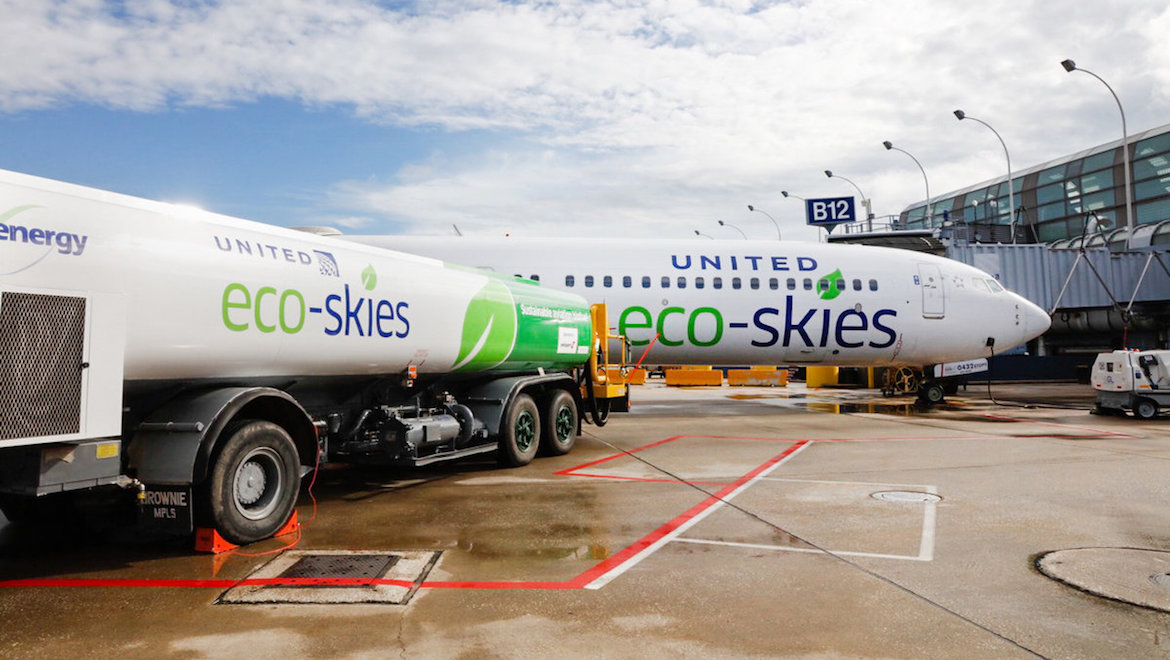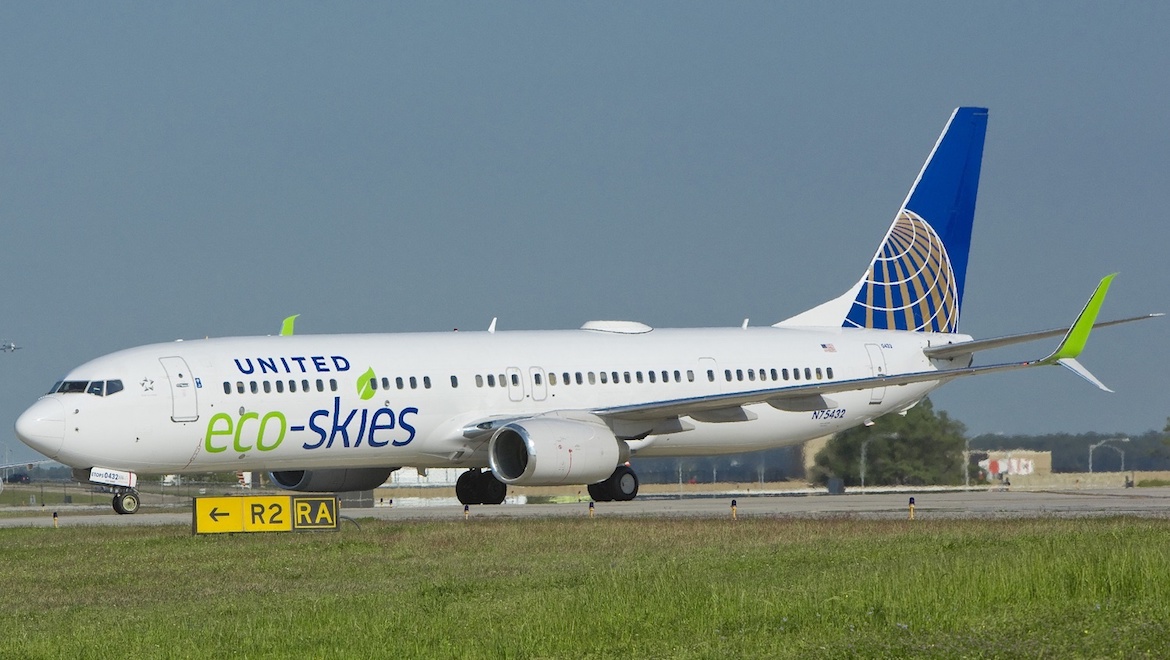
United Airlines says its “Flight for the Planet” on World Environment Day is the first commercial flight marked by a combination of sustainable aviation biofuel, zero cabin waste, carbon offsetting and operational efficiencies.
The milestone flight on Wednesday (US time) was UA 312 from Chicago O’Hare to Los Angeles, operated by Boeing 737-900ER N75432.
United president Scott Kirby said the flight was a showcase of the airline’s philosophy of co-operation to find new paths to a more sustainable future.
“As an airline, we see our environment from a unique perspective every day and we know we must do our part to protect our planet and our skies,” Kirby said in a statement.
United said the flight “the most eco-friendly commercial flight of its kind in the history of aviation” and illustrated its commitment halving its carbon footprint by 2050, which was made in September 2016.
Achieving that target would cut annual emissions by 21 million tonnes of carbon dioxide and have the same effect as taking 4.5 million cars – or all the cars in New York and Los Angeles combined – off the road.
Sustainable aviation biofuel, used as a blend of 30 per cent biofuel and 70 per cent traditional jet fuel, has been used on all United’s flights from Los Angeles since 2016. The biofuel currently used by the airline achieves a reduction of more than 60 per cent on a lifecycle basis, United said.
In December, United announced a key supplier, Fulcrum BioEnergy, had selected a site in Gary, Indiana, for its Centerpoint BioFuels Plant. The fuel product, made from municipal solid waste, was expected to reduce greenhouse gas emissions on a lifecycle basis by more than 80 per cent. The lifecycle calculation of emissions associated with biofuel includes emissions generated in the manufacturing and transport of the fuel.
The “Flight for the Planet”, which took off from Chicago O’Hare at about 1045 local time and landed at Los Angeles a little over four hours later at about 1250, featured zero-waste measures, including a test of an industry-first, recyclable-paper, hot beverage cup and other fully recyclable or compostable serviceware, and beeswax food wrappers.
The remainder of the flight’s greenhouse gas emissions were offset by the airline’s new carbon offset provider, Conservation International.
To increase efficiency, the Flight for the Planet demonstrated single-engine taxiing, air traffic control prioritisation and a continuous descent approach into Los Angeles.
As well, 40 per cent of United’s eligible ground service equipment, and 70 per cent at its Los Angeles hub, was electric-powered.
In late May, United said it had renewed its contract with Boston-based World Energy to buy 10 million US gallons (37,854,117 litres) of sustainable aviation biofuel over the next two years.
The original contract with World Energy in 2013 paved the way in 2016 for it to become the first, and still the only, airline in the world to use sustainable aviation biofuel on a continuous basis.

Sustainability a major focus in aviation
Aviation currently represented about two per cent of man-made carbon dioxide emissions.
In October 2016, an overwhelming majority of the International Civil Aviation Organisation’s 191 member states agreed to the Carbon Offsetting and Reduction Scheme for International Aviation (CORSIA).
Further, 73 nations, including Australia, New Zealand and Papua New Guinea in this part of the world, have agreed to be part of CORSIA from the start.
The landmark agreement has among its targets for the industry to achieve carbon neutral growth by 2020, in addition to a 50 per cent reduction in CO2 emissions by 2050, compared with 2005 levels.
ICAO has also come up with a CO2 emissions standard, where aircraft will have to meet a maximum fuel burn per flight kilometre baseline which must not be exceeded. The standard would apply to new aircraft designs from 2020, while new deliveries of current in-production aircraft models would be subject to the CO2 standard from 2023.
Further, the ICAO measure also recommended a cut-off date of 2028 for production aircraft that did not comply with the standard.
Annual reporting by airlines of emissions on international flights began on January 1 2019.
Moreover, the International Air Transport Association (IATA) has set a target of an average improvement in fuel efficiency of 1.5 per cent per year from 2009 to 2020, as well as aspirations to build an aircraft that produced no emissions within 50 years.
In May, KLM Royal Dutch Airlines has made a commitment to develop and purchase 75,000 tonnes of sustainable aviation fuel a year, which would support the development of Europe’s first dedicated plant for the production of sustainable aviation fuel (SAF) by SkyNRG in Delfzijl, in the north-east of the Netherlands.
Closer to home, Qantas conducted a “zero waste” commercial flight in early May as part of the airline group’s efforts to reduce the amount of plastics, paper and food it sends to landfill by 75 per cent by the end of 2020.
On #WorldEnvironmentDay, we made aviation history. https://t.co/sIEPDlu7zp #FlightforthePlanet #EcoSkies pic.twitter.com/LDPV6RHhln
— United Airlines (@united) June 5, 2019










